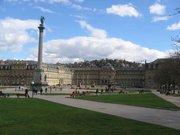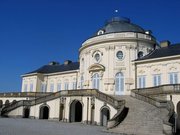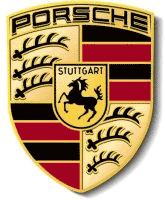Stuttgart
|
|
- For other uses, see Stuttgart (disambiguation).
| Coat of Arms | Map |
|---|---|

| 
|
| Basic Information | |
| German State: | Baden-Württemberg |
| Administrative District: | Stuttgart |
| Conurbation: | Stuttgart Region |
| Area (City of Stuttgart): | 207.36 km² |
| Population (City of Stuttgart): | 591,284 (October 31, 2004) |
| Population Density: | 2,838 persons per km² |
| Percentage of Non-Germans: | 24.3 % |
| Average Altitude: | 260 m (min: 207m / max: 549m) |
| Post Code: | 70001-70629 (formerly: 7000) |
| Area Code: | 0711 |
| Car Licence Code: | S
|
| Geographical Position: | Template:Coor dms |
| Climate: | Average Sunshine per year 1693 h /
Temperature 10.8 °C / Rainfall 665 mm |
| Politics | |
| Lord Mayor: | Wolfgang Schuster (CDU) |
| City Government: Contact Address | Heilbronner Str. 7 70174 Stuttgart |
| Web Site: | www.stuttgart.de |
| E-Mail: | post@stuttgart.de (mailto:post@stuttgart.de) |
Stuttgart, a city located in southern Germany, is the capital of the state of Baden-Württemberg with a population of approximately 600,000 as of June 2004.
| Contents |
Overview
Stuttgart, Germany, the capital of Baden-Württemberg state (pop. 11 million, 36,000 square kilometers) and the Administrative District of Stuttgart (pop. 4 million, 11,000 km²), is located in the center of the very densely populated southwestern Stuttgart Region (population 2.7 million, 3,700 km²) of Germany, close to both the Black Forest and the Swabian Jura. The city center (situated in a lush valley, ringed with vineyards and forests, close to the River Neckar) itself has an approximate population of 600,000 and covers an area of 210 km². Stuttgart with its metropolitan area (the political entity "Stuttgart Region" enlarged by the nearby cities of Tübingen, Reutlingen, Heilbronn and their surroundings) is one of the most prominent and well-known German towns, especially due to its cultural, administrative and huge economic importance.
Stuttgart is the sixth largest city in Germany and Stuttgart Region is the nation's fourth largest conurbation (behind Ruhr Area, Rhein/Main Area and Berlin). Neighbouring large cities are Frankfurt (210 km north of Stuttgart) and Munich (220 km southeast of Stuttgart).
The City of Stuttgart is subdivided into 23 city districts, among the most well-known are:
- Bad Cannstatt (Western Europe's largest mineral spas / Wilhelma)
- Möhringen (DaimlerChrysler HQ / Musical Theaters)
- Stammheim (High-security court & jail, see RAF terrorists)
- Untertürkheim (Original Mercedes-Benz plant)
- Vaihingen (Stuttgart's university and college district)
- Zuffenhausen (Home of the Porsche Sports Cars Company)
Stuttgart is also the seat of a protestant bishop (Protestant State Church of Württemberg) and one of the two co-seats of the bishop of the catholic diocese Rottenburg-Stuttgart.
History
Stuttgart_Weinsteige.jpg
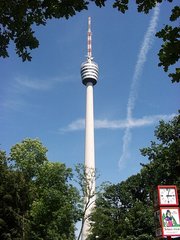
The coat of arms shows a black, rampant horse on a yellow or golden field. It is a canting seal due to the fact that the name "Stuttgart" is an over the centuries modified version of "Stutengarten", in English roughly "mare garden" or "stud farm". About 950, Stuttgart was originally founded by Duke Liudolf of Swabia, one of the sons of the Holy Roman Emperor Otto I the Great, and used for horse breeding (especially for his father's cavalry, see Battle of Lechfeld). Later on (about 1300), Stuttgart became the residence of the counts of Württemberg. In 1496, the counts of Württemberg were promoted to dukes by the emperor of the Holy Roman Empire. After Napoleon's breakup of the Holy Roman Empire, the dukes of Württemberg earned the title of kings and Stuttgart became a royal residence.
The name of the royal family of Württemberg and of the state originates from a steep Stuttgart hill, formerly known as Wirtemberg, nowadays called Württemberg. On top of that hill, the mausoleum from 1824 of Queen Katharina (daughter of Czar Paul I of Russia) and King Wilhelm I of Württemberg is located.
During the revolution of 1848/1849, a democratic pan-German national parliament (Frankfurt Parliament) was formed in Frankfurt to overcome the division of Germany. After long discussions, the parliament decided to offer the title of German Emperor to the Prussian king. Since the democratic movement became weaker, the German princes regained control of their independent states. Finally the Prussian king declined the revolutionaries' offer. The members of parliament were driven out of Frankfurt, and the most radical members (those who wanted to establish a republic) fled to Stuttgart. A short while later, this rump parliament was dissolved by the Württemberg military.
In 1871, as an autonomous kingdom, Württemberg joined the German Empire or Kaiserreich, created by the Prussian prime minister Otto von Bismarck through several successful wars and diplomacy. After World War I, the monarchy broke down and the Free State of Württemberg was etablished, as a part of the Weimar Republic. In 1920, Stuttgart was the seat of the German National Government (since the administration had to flee from Berlin, see Kapp Putsch). During World War II, the city center of Stuttgart was nearly completely destroyed due to air raids.
In 1945 the Allied Forces took control of Germany. They merged parts of the former German States of Baden and Württemberg and later on the new, democratic state Baden-Württemberg (3rd largest German state) with Stuttgart as its capital was created by a referendum.
After World War II, an early concept of the Marshall Plan to support the reconstruction and economic/political recovery of Europe was presented during a speech given by US Secretary of State James F. Byrnes at the Stuttgart Opera House (September 6, 1946). This speech led directly to the unification of the Bristish and American occupation zones, resulting in the so called bi-zone. Two years later, the French also joined the bi-zone, creating the tri-zone and thereby paving the way for the foundation of the Federal Republic of Germany. Stuttgart, like Frankfurt, was a serious contender to become the federal capital, but finally Bonn succeeded.
In the late seventies, the city district of Stammheim was center stage of one of the most controversial periods of German post-war history: The Red Army Faction trial at the Stammheim high-security court and the subsequent suicides of Ulrike Meinhof, Andreas Baader, Gudrun Ensslin and Jan-Carl Raspe (all imprisoned in the Stammheim jail). The trial and the period thereafter were accompanied by several new terroristic assaults to liberate the inmates (German Autumn 1977: i.a. the abduction and murder of the German industrialist and President of the German Employers' Association Hanns-Martin Schleyer resp. the hijacking of Lufthansa flight LH181, redirecting the jet to Mogadishu).
During the Cold War, the joint command center of all American military forces in Europe, Africa and the Atlantic was moved to Stuttgart (US European Command, EUCOM). EUCOM is headquartered there till today.
Economy
MercedesBenz600.jpg
Maybach57.jpg
Approximately 150,000 companies are located in the Stuttgart region. The area is known for its high-tech industry; some of its most prominent companies include Daimler-Chrysler, Porsche, Bosch, Celesio, Hewlett-Packard and IBM, all of whom located their world or German headquarters here. In fact, the Porsche badge, as seen on the front of Porsche cars has this town's name in the centre of the badge, something that is unique amongst the world's vehicle makers. A theory even suggests that also the Ferrari logo "Cavallino Rampante" had its origin in the Stuttgart coat-of-arms.
Stuttgart is the place where the motor bike and the four-wheeled automobile have been invented (both by G. Daimler and W. Maybach), it's hence the starting point of the worldwide automotive industry. Such famous and prestigious brands as Mercedes-Benz, Porsche and Maybach are produced there. Also the very first prototypes of the eventual VW Beetle were fabricated in Stuttgart, based on a design by Ferdinand Porsche.
The region currently has Germany's highest density of scientific, academic and research organisations, and tops the national league for patent applications. More than 11% of all R&D-expenses in the Federal Republic of Germany are generated in the Stuttgart Region (approximately 4.3 billion Euro per year). In addition to several universities and colleges, the area has six institutes of the Fraunhofer Gesellschaft, four institutes for collaborative industrial research at local universities, two Max-Planck institutes, as well as one large-scale research centre—the German Aerospace Centre (DLR).
Stuttgart holds top place of all European Union regions according to the share of employment in high-tech and medium-high tech manufacturing with a figure of 21.0% (2001 data from Eurostat).
The Stuttgart Stock Exchange is the second largest in Germany (only behind Frankfurt) and important financial companies are headquartered in Stuttgart (e.g. Allianz Life Insurance, LBBW Bank or Wüstenrot), as well. In addition to these global players, the Stuttgart economy consists of many highly versatile and dynamic medium-sized enterprises (the so-called "Mittelstand").
Furthermore, Stuttgart is still one of Germany's largest wine-growing towns with a century-long tradition and is situated at the geographic center of the "Württemberg Wine Growing Area" (110.30 km², one of 13 official German growing areas, according to the German Wine Law).
People, Culture & Architecture
Stuttgart_Oper.jpg
Stuttgart_Koenigsbau.jpg

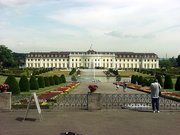
Stuttgart is known for its cultural life, in particular the Staatstheater and Staatsgalerie. The Staatstheater contains an opera house and three smaller theaters, where opera, ballet, theatre and concerts are produced. The world-renowned Stuttgart Opera won the prestigious "Opera of the year" (Germany/Austria/Switzerland) award for five years running (1998-2002). The famous Stuttgart Ballet is connected to names like John Cranko and Marcia Haydée. The city also offers two broadway-style Musical theaters, the Apollo and the Palladium Theater (each approx. 1800 seats).
Stuttgart exhibits fine pieces of architecture from all times. Among them:
- 1200 - 1600 Collegiate Church (Exterior: Romanesque/Gothic); Interior: Romanesque/Gothic/Modern);
- 1300 - 1500 Old Palace (Renaissance Style);
- 1700 - 1800 New Palace (Baroque / Classicism);
- 1700 - 1800 Solitude Palace (Baroque / Rococo);
- 1850 King's Building (Classicism);
- 1910 Market Hall (Art Nouveau);
- 1920 Main Railway Station (Pre-Modern);
- 1920 Weissenhof Estate (Bauhaus / International Style);
- 1950 TV Tower (World's First TV Tower);
- 1980 New State Gallery (Postmodern);
- 2000 International Airport (Modern)
- 2005 City Art Museum (Modern).
In 1992, the VfB Stuttgart (a leading Bundesliga football team) claimed the first German Championship title after the reunification of the football federations of West and East Germany. The city also has a reputation for organizing other major sports events. It hosted the 1993 World Championships in Athletics and many other world and European championships of all kind of sports. The town will be one of the twelve hosts of the Football World Cup 2006. I.a. the 3rd and 4th place playoff of the World Cup will be held at the City's Daimler Stadium.
Stuttgart's Swabian cuisine, beer and wine (produced in the area since the 1600s) are also well known. Yearly one may attend the "Cannstatter Wasen", a famous beer festival which is second only in size to the Oktoberfest in Munich. The Christmas Market of Stuttgart is the largest and one of the oldest and most beautiful in Europe.
The famous "Wilhelma" is Germany's only combined zoological and botanical garden. The whole compound has been built around 1850 as a summer palace in moorish style for King Wilhelm I of Württemberg. Close to the Wilhelma, there are the Stuttgart city districts of Bad Cannstatt and Berg situated, exhibiting the second largest mineral spas in Europe (only excelled by Budapest).
Important towns which are also located in the Stuttgart Region are Ludwigsburg with its enormous baroque palace, Sindelfingen and Esslingen.
Famous People from Stuttgart
- Georg Wilhelm Friedrich Hegel - philosopher
- Friedrich von Schiller - poet
- Gottlieb Daimler - inventor
- Wilhelm Maybach - inventor
- Robert Bosch - inventor
- Count Stauffenberg - member of the German Resistance who tried to kill Hitler
- Ferdinand Porsche - creator of the VW Beetle and founder of the Porsche car company
- Theodor Heuss - First German Post-War President
- Richard von Weizsäcker - German President, Lord Mayor of Berlin
- Günther Behnisch - architect
- Frei Otto - architect
- Jürgen Klinsmann - football player, coach of the German football squad
- Roland Emmerich - director
- Hermann Lang, Grand Prix race car driver
Sister Cities
- St Helens, Merseyside, United Kingdom, since 1948
- Cardiff, United Kingdom, since 1955
- St. Louis, USA, since 1960
- Strasbourg, France, since 1962
- Mumbai (formerly known as Bombay), India, since 1968
- Menzel-Bourguiba, Tunisia, since 1971
- Cairo, Egypt, since 1979
- Lodz, Poland, since 1988
- Brno, Czech Republic, since 1989
- Samara, Russia, since 1992
External links
- Official homepage of Stuttgart (http://www.stuttgart.de)
- Official Stuttgart Tourist Board (http://www.stuttgart-tourist.de)
- Stuttgart City Panoramas (http://www.panorama-cities.net/stuttgart/stuttgart.html) - Panoramic Views and Virtual Tours
- Stuttgart International Airport (http://www.stuttgart-airport.de)
- Stuttgart Public Transport System (http://www.vvs.de/en/index.php)
- Stuttgarter Staatstheater official site (http://www.staatstheater.stuttgart.de)
- University of Stuttgart official site (http://www.uni-stuttgart.de)
- University of Hohenheim official site (http://www.uni-hohenheim.de)
- Weissenhof Estate (Gropius, Le Corbusier, Mies van der Rohe) (http://www.weissenhofsiedlung.de)
- Daimler Stadium Stuttgart official site (http://www.daimler-stadion.de/stadion_en.htm)
|
Rural and urban districts in Baden-Württemberg |
| Alb-Donau | Baden-Baden | Biberach | Bodenseekreis | Böblingen | Breisgau-Hochschwarzwald | Calw | Constance | Emmendingen | Enzkreis | Esslingen | Freiburg | Freudenstadt | Göppingen | Heidelberg | Heidenheim | Heilbronn (city) | Heilbronn (district) | Hohenlohekreis | Karlsruhe (city) | Karlsruhe (district) | Lörrach | Ludwigsburg | Main-Tauber | Mannheim | Neckar-Odenwald | Ortenaukreis | Ostalbkreis | Pforzheim | Rastatt | Ravensburg | Rems-Murr | Reutlingen | Rhein-Neckar | Rottweil | Schwarzwald-Baar | Schwäbisch Hall | Sigmaringen | Stuttgart | Tuttlingen | Tübingen | Ulm | Waldshut | Zollernalbkreis
edit (https://academickids.com:443/encyclopedia/index.php?title=Template:Germany_districts_baden-w%FCrttemberg&action=edit)
|
da:Stuttgart de:Stuttgart et:Stuttgart als:Stuttgart es:Stuttgart eo:Stutgarto fr:Stuttgart ko:슈투트가르트 id:Stuttgart it:Stoccarda he:שטוטגרט ka:შტუტგარტი la:Stuttgartum nl:Stuttgart ja:シュトゥットガルト nb:Stuttgart pl:Stuttgart pt:Stuttgart ru:Штутгарт simple:Stuttgart fi:Stuttgart sv:Stuttgart zh:斯图加特

